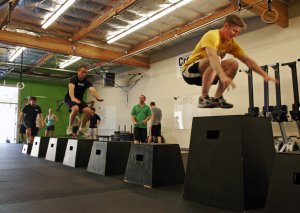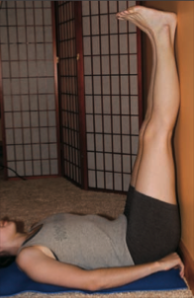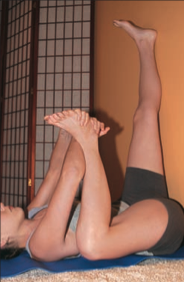I was hired to write the following information over five years ago, by a gym owner looking to increase revenue. At the time, the gym owner had a slightly less that 50% closing rate. This meant, that approximately half of the traffic that toured his facility, actually ended up signing up as clients. Looking to increase his closing rate, I wrote a manual for him to hand to everyone who left his gym prior to signing on for his services. The manual was to be handed out, with the following instructions “I know there are several other gyms in the area and it’s important to find a facility where you feel comfortable. And to help save you money and time, here’s a list of things to look out for and a list of questions to ask the trainers.” My goal for the booklet was simple, to create the frame of reference the potential client would use to judge the competence of any potential trainers/facilities they might encounter. I ensured the potential client was using objective criteria, rather than subjective, in hiring the right trainer…my client. And it worked. Within a five week period, my client’s closing rate climbed to 76%, translating to an additional $15,000.
If you’re a gym owner or a trainer, feel free to print out this blog post and hand it to any potential clients. Doing so will help distinguish you from the masses and establish you as a true professional. And even if you’re not in the fitness industry, you can still utilize the following information to ensure you don’t waste your hard earned money, or worse, your time.
Whether you want to look good naked, build your strength or want to ensure that you do not die of a heart attack before the age of forty, hiring a personal trainer can help you get the job done. A personal trainer can provide motivation, and accountability through regularly scheduled appointments. But where do you begin the search for the person that is going to lead you towards the body you have always wanted? The Yellow pages? The Internet? The Penny Saver ads? After all, you are spending your hard earned money, and you want the best you can find right? So, you start searching the internet and find numerous articles on how to find the right trainer. After reading a few, you realize they all contain the same information:
- Check for certifications
- Check for liability insurance and CPR certification
- Check educational background
But, do any of these guarantee that the trainer you are about to hire is the most qualified to make you look good naked, or stronger? The truth is that these articles simply provide a checklist of necessary requirements, which give you no information as to the true effectiveness of the trainer you are about to hire. Let’s take a closer look at each:
Certifications
Worldwide, there are currently over 300 training certifications. Certifications run the gamut from those requiring a college degree in a related field, such as kinesiology or physiology, while others only require a weekend seminar. Surprisingly, some only require that you pass a simple online exam and possess a valid credit card. I have known people who attended a weekend long certification course, and 2 weeks later, were working for that organization as certification instructors. So much for real world experience.
Out of 700 certifications, there is only ONE that requires you to demonstrate an appropriate level of expertise before becoming fully certified.
Need proof that training certifications do not guarantee competence? Here’s an article written by a certified trainer, in which she reveals one of her weight loss secrets:
Losing Weight Quickly
1. Belly Rubbing
…rub your hands together for 10 seconds to create some heat on them. When you’re rubbing over your stomach fat, this heat goes from your hand and right past the skin and into the fat cells where the heat helps to loosen up these hard deposits. I suggest you do this…2 minutes each time. I suggest you do this a total of 4 minutes a day. The best times are early in the morning and late at night 2 minutes each time.
Apparently, the answer to the worldwide obesity crisis is to rub your belly for 4 minutes a day, in 2 minute increments. How could the National Institutes of Health overlook this “expert’s” recommendation? Quick, someone contact the Nobel committee!
I hope you detect my sarcasm, but if your sole criteria for hiring a trainer were a certification, then you could possibly end up hiring someone like this person. Remember, you can- not teach common sense.
Insurance and CPR Certification
Liability insurance and CPR certification, while important and necessary from a business perspective, tells you nothing about the trainer’s ability to help you accomplish your goals. It would be like judging the quality of the food at a restaurant by asking the chef if he knows the Heimlich maneuver.
Education
While education is important in any profession, in the fitness field, I do not place a high premium on college degrees. In most instances, the curriculum at universities are outdated by 5-10 years, and primarily focus on the cardiovascular system, with very little time spent on the most efficient means of making one strong and lean. I have seen some of the most horrendous and ineffective training programs designed by trainers with multiple degrees.
In the following pages, I am going to share with you criteria that are essential for any trainer to be successful. Finding a trainer who displays these behaviors will greatly increase your chances of finding a competent, talented, and dedicated trainer, one who will keep you from wasting your time and hard earned money.
1. Rest Periods
Rest periods are the length of time taken between sets and exercises, and is the most neglected aspect of program de- sign among personal trainers. Rest periods help dictate the goals and design of a training program and are just as impor- tant as the exercises, number of repetitions and number of sets performed.
In general, when training for strength, between 1 to 6 reps, rest periods of up to 5 minutes are required. When training with higher reps, rest periods between 30-90 seconds are ad- equate.
Strength training requires considerably longer rest periods because the nervous system takes up to 6 times longer to recover than the muscular system. The longer rest periods prevent excessive fatigue from accumulating, which can affect proper exercise form, thereby reducing the risk of injury.
Trainers and Rest Periods
If rest periods are so important, then why do the majority of personal trainers neglect them? Laziness. Tracking rest periods requires the trainer to be fully engaged with their client.
Is the client struggling excessively before the prescribed numbers of reps are completed?
Did the client stay up all night with a sick child?
Does a client, who normally displays correct exercise form, suddenly perform as if it is their first time doing that particular exercise?
Tracking rest periods also requires the trainer to have a system for tracking and recording their client’s rest periods. Again, most trainers cannot be bothered to retain a $10 watch, and a sheet of paper on behalf of their client.
You might be asking yourself “If trainers do not track rest periods, then how do they gauge the amount of time spent between sets?” They tell you a story. Sometimes the story entails what they did last weekend, which might take 45 seconds, at other times it might take 5 minutes. Either way, it spells money down the drain for you, because inconsistent rest periods, day after day, are going to give you inadequate results, regardless of your goals. Most trainers would prefer to just count reps, hold their clip board, and daydream versus taking an active interest in their client.
To be fair, I must state that in most instances, trainers are unaware of the importance of rest periods because their train- ing certification organization failed to impart their importance. Over the past years, I have read some of the educational train- ing manuals from different certifying agencies. At best, some organizations offer a few paragraphs of information regarding rest periods. At worst, others do not mention rest periods at all.
When I design a training program, I use up to 12 different principles to guide me when designating rest periods.
What To Ask
When meeting with your potential trainer, ask if they record rest periods. If the trainer is not willing to invest in the cost of a wrist watch and a single sheet of paper, should you invest your hard earned money in them?
2. Exercise Machines
In my opinion, one of the most debated and redundant subjects in the field of resistance training is that of exercise machines vs. free weights…which is better? I will settle it once and for all, in 99% of cases, exercise machines suck. Need proof?
One of the biggest concerns with exercise machines is that they force your muscles to work in a manner that is completely different from real-life situations. For instance, when placing a large box overhead onto a shelf, your deltoid muscles are the primary movers, with your rotator cuff muscles acting as stabilizers. This harmonic relationship between your deltoid and rotator cuff muscles is replicated when you lift a barbell or dumbbells over your head. But when you perform this movement on an exercise machine, because of its fixed trajectory, the rotator cuff muscles do not activate. This forces your body to function in a completely unrealistic manner and teaches your body a faulty motor (muscle) recruitment pattern, drasti- cally increasing your chances of injury.
The fact that fewer muscles are exercised with machines should especially concern those looking for favorable body composition changes. The fewer muscles engaged in an ex- ercise, the fewer calories you burn. In the above example, while lifting a box or barbell overhead, your lower body mus- culature is recruited to keep you from losing your equilibrium, which is half your body! But on a machine, where you are in a seated position, your lower body is not recruited, requiring less energy (calories) to be expended.
There are numerous gyms that highlight the fact that they have a “30 minute exercise circuit,” consisting of exercise machines set up in rows. They claim that it is easy, efficient and convenient. They fail to mention that after 3 weeks, your body will become used to performing the same exercises, no longer benefiting from them, and you’ll eventually succumb to tendonitis.
Trainers and Machines
I will let you in on a closely held secret: Most trainers love exercise machines. Trainers use exercise machines for the same reason parents use a leash on their children…it allows them to focus their attention elsewhere while still exercising a measure of safety on the client/child. Again, most trainers would rather daydream and take the path of least effort, than focus on the client. Plus, most trainers lack the ability to prop- erly teach an exercise. It is easier to place a client in the leg press versus teaching them to squat.
Exercise machines are also popular with trainers because they allow the client to use a large amount of weight. Exercise machines do not require the client to stabilize the weight, thus allowing for a greater weight to be used than if a free weight version was performed. For instance, it’s not uncommon for beginners to perform the leg press exercise with over 500 lbs. However, these same people would snap their spine in half if they attempted the same weight with a squat. It is even doubtful if they could squat a third of that weight. But trainers know this and rely on exercise machines to impress their clients. A client notices the huge amount of weight they are lifting, gets really excited, and proceeds to purchase a block of 50 sessions. But in reality, the client is headed down a path which ultimately leads to stagnation, injuries and a false sense of accomplishment. But at least the trainer makes their mortgage payment for the month.
On two separate occasions, I was told by two different female trainers that the reason they use machines is because they did not have the strength to properly “spot” their male clients. Spotting refers to an individual assisting the lifter during a rep when needed. Now, I am not making any statement as to women being weaker than men. I know numerous women who can out lift most men, Liane Blyn for instance. However, I was told by these female trainers that they were not strong enough. If these female trainers were professional and placed the needs of the clients before their own financial gain, they would have referred the male clients to someone else. But in the cut throat world of the fitness business, they were thinking of the money they would have lost, instead of the muscular injuries and imbalances they will ultimately induce on their clients.
What To Ask
Ask your potential trainer to share their philosophy on exercise machines. If their response is similar to what you have read in this eBook, chances are they know what they are talking about.
Ask to see training programs they have designed for other clients. If you notice that in every training session they include 2 or more exercise machines, take your business elsewhere. I have produced countless 12 week training programs without using a single exercise machine.
Ensure the trainer’s strength levels are adequate to spot you when needed.
3. Training Logs
The importance of a training log as an analytical tool should not be underestimated. It allows you to monitor your training objectively and helps maintain motivation. Research has shown that people who have techniques to keep them motivated are 40 percent more likely to stick with their exercise program.
A training log does not have to be fancy, it should be designed with room to record your weights used, rest periods, and reps and sets performed.
If you do not use a training log, but instead rely on memory, you are setting yourself up for failure. After a few training sessions, your memory will fade faster than Lindsay Lohan’s career and you will be lost as to how much weight to use. Using too much weight will not allow you to perform the prescribed number of reps and too little weight will not be a sufficient stimulus to your body. In order to get stronger or leaner, it is vital that you present the same exercises, in the same manner in order for your body to adapt. If not, you are wasting your time and just going through the motions without any benefit.
Trainers and Training Logs
If you want to make most trainers sweat, ask them to show you any client’s training log from three months ago. Again, most trainers follow the path of least effort and throw away training logs as soon as they are done with them. If they use training logs at all.
What most trainers fail to understand is that training logs are a wealth of information, if you know what to look for. When one of my client’s performance in the weight room plateaus, the first thing I do is review all their training logs. I search to find where my client recorded their best performances and compare that training log to their current progress. I look for patterns:
- Perhaps this client needs to perform more/less sets?
- Perhaps this client responds to certain exercises better than others?
- Does this client benefit from taking extra recovery time between workouts?
- Does this client appear to perform better with more frequent training sessions per week?
- Does this client respond better to longer rest periods?
The amount of information that you can cull from training logs is endless.
What To Ask
When meeting with your potential trainer, ask to see train- ing logs from three different clients: teenager, male and fe- male. It would also be extremely helpful to ask to see training logs for clients training for strength and fat loss. Not only will this allow you to see if the trainer does keep training logs long term, but it shows you the trainer’s ability to design training programs. If you notice that all their training programs look the same, this is not the trainer for you. There is no such thing as a single training program that will magically work for all age groups and genders. Different fitness qualities require differ- ent approaches to training.
Additionally, if you notice that all their training logs have a group of exercises pre-printed on them, leave. Again, following the path of least effort, most trainers use these pre-printed training logs with every one of their clients. And even though the training log may list up to 15-20 exercises, this will cost you money. In general, the human body adapts to any training program within 4 weeks. After which, the client will need a totally different training program, including the number of reps, sets and exercises. I have clients that adapt so quickly, that I have to design a new training program every 2 weeks! How effective will your training sessions be if you perform the same group of exercises, week after week, month after month?
When I design a training program, I have a database of over 800 exercises to choose from. For example, with the leg curl, I have over 60 different variations available. My clients can go up to a year without repeating the same exercise.
In the second part of this article, we’ll cover certifications and one of the most abused forms of training, plyometrics.








